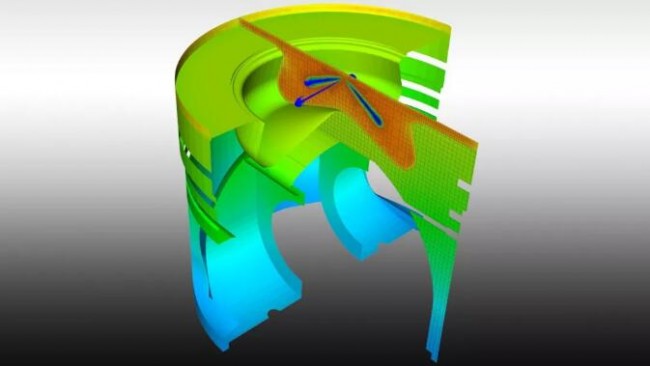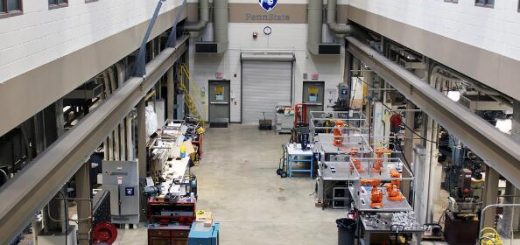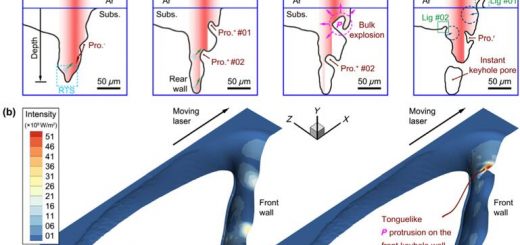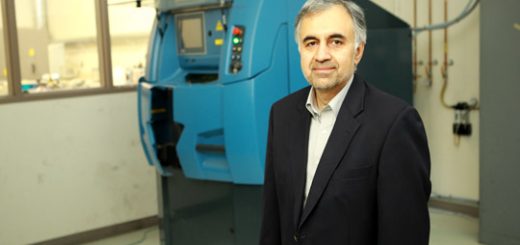Caterpillar-Argonne Team to Pursue Improved Diesel Engine Combustion Systems
Partnership will pursue a unique approach that combines high-performance computing, additive manufacturing and higher-fidelity design and simulation models.
Researchers created this predictive cross-sectional view of an engine geometry showing in-cylinder and metal piston temperatures using a coupled conjugate heat transfer and computational fluid dynamics model. Researchers created this predictive cross-sectional view of an engine geometry showing in-cylinder and metal piston temperatures using a coupled conjugate heat transfer and computational fluid dynamics model. (Image by Convergent Science and Argonne National Laboratory.)
Researchers created this predictive cross-sectional view of an engine geometry showing in-cylinder and metal piston temperatures using a coupled conjugate heat transfer and computational fluid dynamics model. (Image by Convergent Science and Argonne National Laboratory.)
Caterpillar Inc. and the U.S. Department of Energy’s (DOE) Argonne National Laboratory are joining forces to research heavy-duty diesel engines. This project is funded by the Department’s Advanced Manufacturing Office (AMO) and Vehicle Technologies Office (VTO) and is one of seven public-private partnerships recently selected under the DOE’s High Performance Computing for Manufacturing (HPC4Mfg) program.
The HPC4Mfg program fosters collaboration between the DOE’s national laboratories and U.S. manufacturers. The Caterpillar–Argonne team aims to increase efficiency and reduce emissions by optimizing the Caterpillar C15 piston and fuel spray geometry through simulation.
![]() Harnessing Caterpillar and Argonne expertise for ground-breaking solutions
Harnessing Caterpillar and Argonne expertise for ground-breaking solutions
“We look forward to harnessing the power of both Caterpillar’s and Argonne’s industry-leading research expertise and world-class facilities to develop ground-breaking solutions for diesel engine design,” said Jon Anders, principal investigator and senior engineering specialist in the Innovation & Technology Development division at Caterpillar.
Caterpillar and Argonne plan to pursue a unique approach that will combine high-performance computing (HPC), additive manufacturing (AM) and higher fidelity design and simulation models. The organizations plan to build and test heavy-duty diesel engines that reduce emissions and improve fuel economy. Another goal of the project is to reduce manufacturing design costs and reduce the lead times needed to expand research-derived technology to industrial-scale manufacturing processes.
As the world’s leading manufacturer of construction/mining equipment and diesel engines, Caterpillar has state-of-the-art single- and multi-cylinder engine test facilities as well as facilities devoted to traditional and additive manufacturing. The company has a history of pushing the limits of engine simulation and continues to be a proponent of fundamental improvements in modeling capability. Caterpillar leverages large-scale HPC resources — including Argonne’s Mira supercomputer at the Argonne Leadership Computing Facility (ALCF), a DOE Office of Science User Facility, and computing resources at Argonne’s Laboratory Computing Resource Center, which supports internal laboratory users — to enhance throughput from simulations.
![]() Furthering collaboration between Caterpillar and Argonne
Furthering collaboration between Caterpillar and Argonne
Argonne and Caterpillar will work in tandem through multiple stages of the HPC4Mfg project using HPC simulations at Argonne and engine and AM testing facilities at Caterpillar. Caterpillar’s plan to team with Argonne stems from previous joint projects and the desire to combine Caterpillar’s engine expertise with the laboratory’s expertise in fuel spray and combustion modeling using CONVERGE (a computational fluid dynamics software package widely used in industry) with HPC systems at the laboratory. Argonne, Caterpillar and Convergent Science have collaborated in previous DOE-funded projects as well.
“I welcome this opportunity to partner with Caterpillar to help optimize heavy-diesel engine combustion and make a meaningful impact on boosting fuel economy and reducing emissions,” noted Prithwish Kundu, a staff researcher at Argonne who will lead the simulation effort.
Source:Argonne




Recent Comments